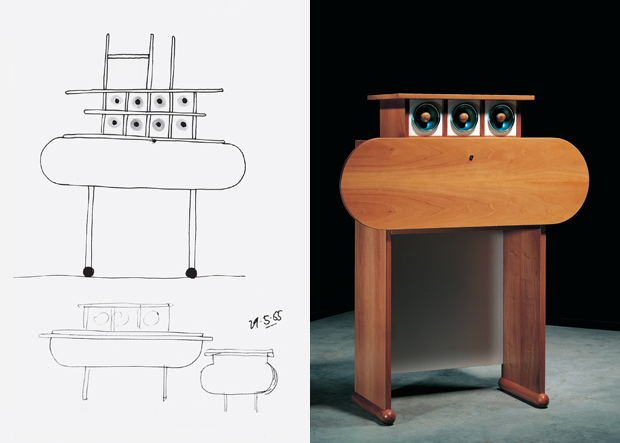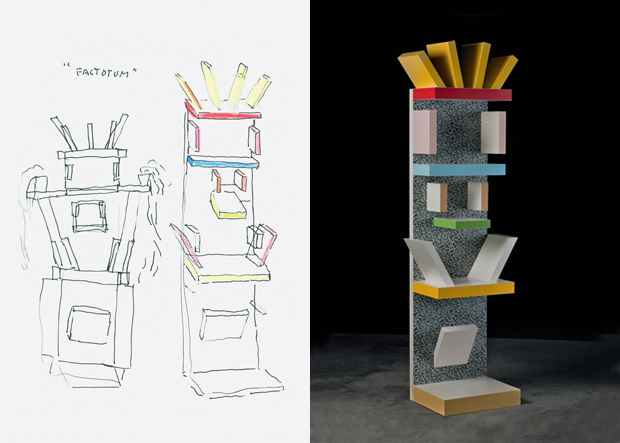
How Sottsass went from page to product
We seek out the early sketches that became household objects for the design conscious
While we regard him as a masterful Italian designer, drawing predates any significant work of product manufacture in Ettore Sottsass’s life. As a child he drew endlessly, often sketching cemeteries. When sent to the front in the Second World War, he wrote home asking for coloured pencils, “because I cannot live without them.” So we thought it would be a nice idea to put together some of his sketches and the products they spawned featured in our new book Sottsass.
As we note in Sottsass, even towards the end of his life, Ettore was still drawing every day. “There were images of tables and chairs, glass objects, and places”. Architecture too was a constant subject matter. There were fantastic houses; and whole towns. "I dreamed about a town with piazzas not streets," he said of one project.
While those fantastic towns might not have been built, Sottsass’s completed works are substantial. We’ve selected a few of his best-known designs, and their accompanying sketch, to show just how he went from the paper drawing to the product.
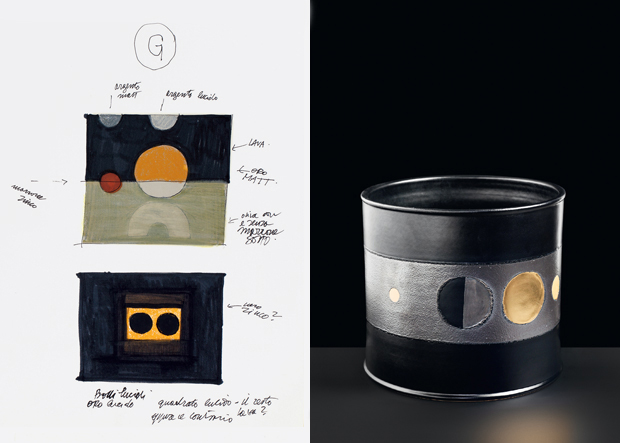
These ceramics were made while recovering from a serious illness. In 1963, he produced the Ceramiche delle tenebre (Darkness ceramics), a series of seventy pieces that conveyed his own anxieties and the dark side of life – supposedly named as such because he designed them at night, in the dark, unable to sleep because of the medicinal drugs he was taking. "I couldn’t sleep, my brain was still working, I was still getting ideas, and writing and drawing," he recalled.
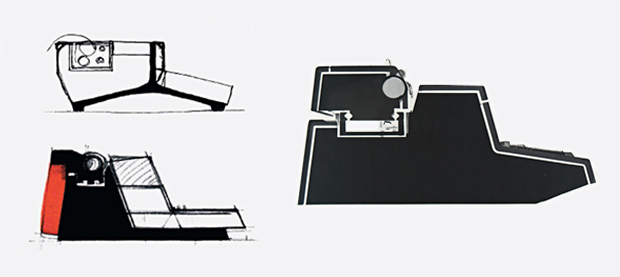
In 1964, Olivetti introduced its first electric typewriter, the Tekne 3. From a technological point of view, this product represented an innovation for the company even though the project had been in development since the late 1950s. It was Sottsass’s first typewriter design for Olivetti. When in New York, Sottsass happened to see Claes Oldenburg’s sculpture Soft Typewriter (1963) at the Sydney Janis gallery, and noted the coincidence with amusement, writing that the softest typewriter ever made was the polar opposite of his, which was undoubtedly "the least soft possible" as the hard lines in his sketch make clear.
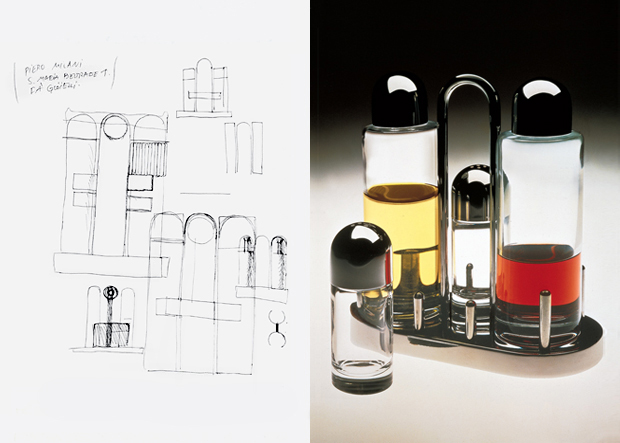
The 1974 5070 Condiment Set for Alessi was part of a collection for the Italian homeware manufacturer, designed to make the commonplace seem special. As our Sottsass book explains: “The containers – sophisticated, crystal glass cylinders topped with polished stainless steel domes – are like delicate perfume bottles (and were in fact described as ‘fragrance for salad’ in Metropolis magazine in 1986). Both stylish and practical – the glass reveals the contents and how much remains – the 5070 Condiment Set is a truly utilitarian piece of design that was ahead of its time, providing an early indication of the design style that would become dominant through the 1980s.

This Factotum piece (1981) above, drawn up and produced for the Italian furniture firm Alchymia, is ofen regarded as a precursor to the designer’s later work in the Memphis group.
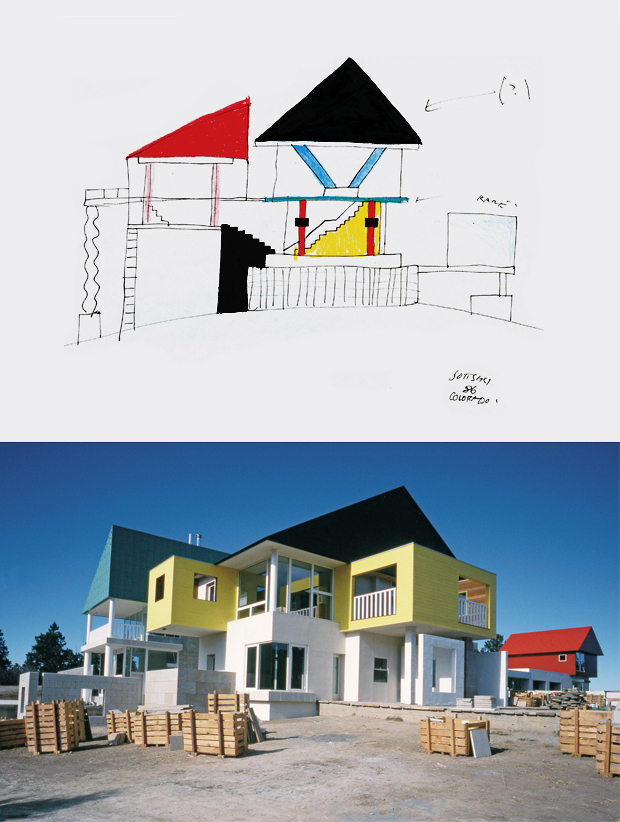
In the 1980s, Sottsass focussed on architecture, building homes such as this one, created between 1986 and 1989, for his friend, the art dealer Daniel Wolf, in Ridgway, Colorado.
As the Sottsass book explains: “The colours that he chose for the lower part of the building were subtle, neutral tones that blend in with the surroundings. However, those he used in the more elevated sections become ever more vibrant – red, black and green and a citric yellow – giving the impression, from a distance, of a collection of geometric shapes floating in the landscape.”
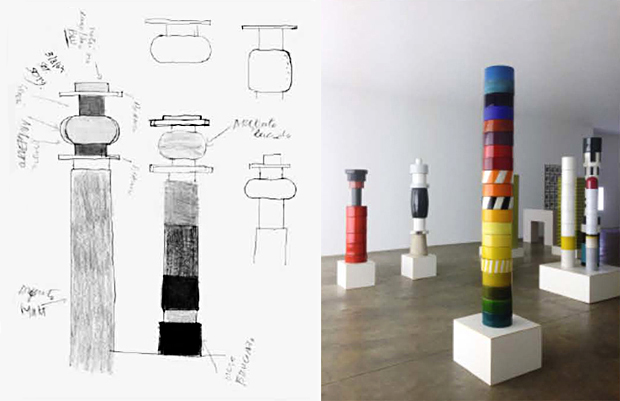
For a richer understanding of his life and work, please buy a copy of Sottsass, available to order here. And if you're a Sottsass fan and you're in London next week, you may like to know there's a great talk going on at the Design Museum between Dyan Sudjic and Sottsass's wife and Memphis co-founder Barbara Radice. Check out the Phaidon Club members' area for details. Not a member? Then join here. It's free and we'd love to see you at our events.
